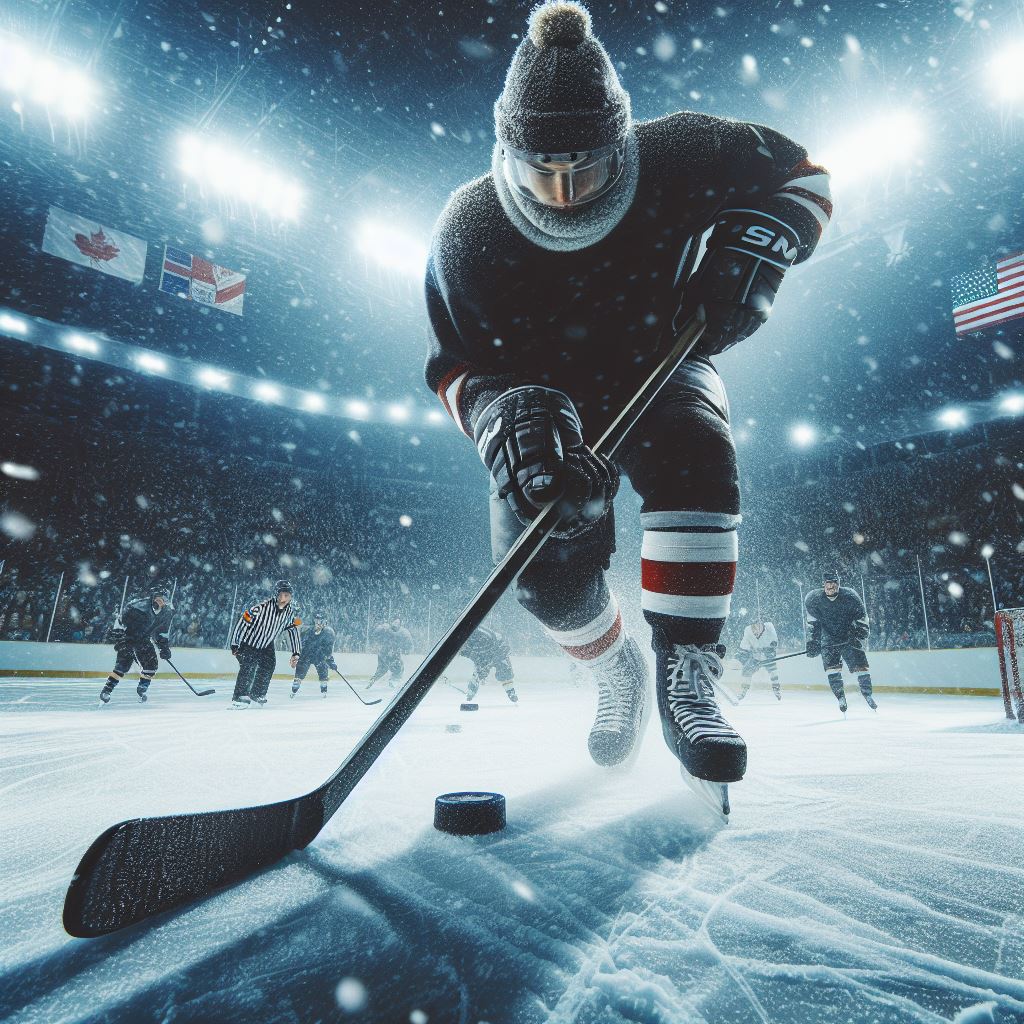Discover the meaning of “PIM” in hockey with our comprehensive guide. Learn what does PIM stands for in hockey, its significance in the game, and its evolution over time. Gain insights into penalty minutes, player behavior, and team strategies.
Introduction
In the world of hockey, the term “PIM” carries significant weight, standing for Penalty Infraction Minutes or Penalties In Minutes, commonly called Penalty Minutes. PIM represents the cumulative total of time a player spends in the penalty box due to on-ice infractions and is meticulously tracked by game and season.
As we embark on an exploration of PIM in hockey, we uncover what does PIM stands for in hockey games, and its multifaceted significance, tracing its evolution through the annals of the sport’s history. This is from the NHL’s early days to its modern-day context. Understanding PIM is not merely an exercise in statistical analysis; it unveils the dynamics of player behavior, team strategies, and the very essence of competition on the ice.
Table of Contents
What Does PIM Stand For In Hockey?
PIM stands for Penalty Infraction Minutes or Penalties In Minutes but is more commonly called Penalty Minutes. PIM is the total of time a player has spent in the penalty box due to on-ice infractions and is calculated by game and season.
Understanding PIM In Hockey
Hockey penalties are a fundamental aspect of the game. Among the most commonly discussed penalties is “PIM,” which stands for “Penalty Infraction Minutes” or “Penalties In Minutes.” In this section, we delve into the definition, historical evolution, and significance of PIM in hockey.
Definition of PIM
PIM, or Penalties In Minutes, refers to the cumulative time a player spends in the penalty box. This is for infractions committed during a hockey game. When a player commits a foul or violates a rule, they are typically sent to the penalty box for a designated period. This is ranging from two to five minutes, depending on the severity of the infraction. These minutes are tallied throughout the game and recorded as PIM for each player.
Evolution of the Term in Hockey
The concept of penalizing players for rule infractions has been a part of hockey since its inception. However, the formal tracking of penalties and the introduction of PIM as a statistic emerged over time as the game evolved. In the early days of hockey, penalties were less standardized and often enforced inconsistently. As the sport professionalized and standardized its rules, the need for a systematic way to track penalties became apparent.
The evolution of the term “PIM” coincided with the development of official rulebooks and scoring systems. While penalties were initially recorded simply as the number of infractions committed by a player, the introduction of PIM provided a more precise measure of a player’s penalty minutes. This allowed for better analysis and comparison of player behavior and team discipline.

Significance of PIM in the Game
PIM serves multiple purposes within hockey, both on and off the ice. Firstly, it acts as a deterrent against rule infractions by penalizing players who engage in illegal or unsportsmanlike conduct. The threat of spending time in the penalty box can influence players to adhere to the rules and play with greater discipline.
Furthermore, PIM measures a player’s aggressiveness and physicality on the ice. Players who accumulate high PIM often play a more physical style, engaging in body checks, fighting, and other aggressive tactics to gain a competitive edge. While physical play is a legitimate aspect of hockey, excessive penalties can also indicate a lack of discipline or control. This may negatively impact team performance.
From a strategic standpoint, coaches and analysts use PIM data to assess player performance and team dynamics. High PIM totals may indicate a need for improved discipline or adjustments to playing strategies. In contrast, low PIM totals can suggest a more disciplined and controlled style of play. Understanding PIM statistics allows coaches to tailor their game plans and tactics to maximize their team’s strengths and minimize their weaknesses.
Types of Penalties and Length in Minutes (PIM)
Minor penalties
Minor penalties are 2 minutes long and represent the least severe penalty type assessed. Penalties under this category include tripping, slashing, roughing, holding, interference, delay of game, high sticking, etc.
Whenever a goal is scored during a 2-minute powerplay, the remainder of the penalty is nullified. However, this doesn’t change the PIM totals of the offending player. It still counts as two minutes in season and career totals. Note that if the penalized team scores while shorthanded, the power play will continue for the other team.
Double minor penalties
A double minor penalty is simply two 2-minute penalties assessed to the same player for the same play. This is usually from a high-sticking play causing the opposing player to bleed.
When a player is assessed a double-minor, they must serve the entire 4 minutes unless a goal is scored on the powerplay. If the advantaged team scores during the first penalty, the powerplay clock is reduced to 2 minutes. Should they score again during the second 2-minutes, the penalty will be completely nullified.

Major penalties
Major penalties are 5 minutes in length and characterize a more serious offense such as boarding, cross-checking, spearing, and so forth. The most common major is usually attributed to players fighting, commonly referred to as “5 for fighting”. However, since it takes two players to fight, the penalties cancel each other out. When a player receives a major, they must serve the full 5 minutes regardless of whether they are being scored against or not.
Misconduct and Match Penalties
Players who receive a 10-minute misconduct penalty must stay in the box for the full duration. There is no powerplay given to the opposing team unless the misconduct is accompanied by a minor or major penalty. If a minor or major penalty was also given, another player must serve time in the box for the offender.
Meanwhile, the offender can only return to the ice once the 10 minutes have expired and gameplay has been whistled dead. For Match Penalties, the offending player is removed for the sake of the game. There are no designated penalty minutes (PIM) for a match penalty.
Penalty Shots
Occasionally, we fans are treated to a call by the referee that leads to a penalty shot. Typically, a penalty shot is granted when the defending team prohibits a player from shooting at the goalie who otherwise would have a clear path to the net. The other known play where a penalty shot can be awarded is if the defending team player (aside from the goalie) freezes the puck in the crease. When a penalty shot is awarded, the penalized player will not incur any PIM to their stats.
History of PIM
Early NHL penalties
When the NHL was founded in 1917-18, players could be assessed a 3-minute penalty (minor) or a 5-minute penalty (major). At that time, the player was removed from play for the duration, but teams were not required to play shorthanded. In other words, the punished player was replaced by another player from their team.
Changes in the Rules
During the 1918-19 NHL season, rules were amended so that the penalized player could not be replaced, and opposing teams were awarded powerplays for minor and major penalties. It’s important to note that penalized players served the full length of the infraction regardless of goals scored.
Further developments
In 1921-22, minor penalties were reduced from 3 minutes to 2 minutes. Then, in the 1923-24 season, match penalties were introduced, requiring the penalized team to play shorthanded for that period. The concept of penalty shots was introduced in the 1934-35 season.
Evolution of Minor Penalties
It wasn’t until the 1956-57 season that players serving a minor penalty were allowed back on the ice following a power-play goal. This change was prompted by a memorable game in which the Montreal Canadiens’ Jean Beliveau scored a hat trick on the same power play. The power play was a result of a 2-minute minor infraction, and Beliveau remarkably scored three goals in just 44 seconds.
Top 10 PIM Leaders (Career NHL)
In case you were curious, here’s a rundown of the top 10 leaders in NHL penalty minutes.
Looking at the list, many of these players are remembered for their physicality on the ice, often getting into fights and accumulating more than their fair share of game misconduct.
The Role of Enforcers
It’s worth noting that many of these players were designated team enforcers. They were tasked with protecting their star players and ensuring physical intimidation on the ice. A prime example is Marty McSorley, who transitioned from the Edmonton Oilers to the Los Angeles Kings in a trade deal that involved the legendary Wayne Gretzky.
Top 10 PIM Leaders
| Rank | Player | PIM |
| 1 | Dave Williams | 3,971 |
| 2 | Dale Hunter | 3,565 |
| 3 | Tie Domi | 3,515 |
| 4 | Marty McSorley | 3,381 |
| 5 | Bob Probert | 3,300 |
| 6 | Rob Ray | 3,207 |
| 7 | Craig Berube | 3,149 |
| 8 | Tim Hunter | 3,146 |
| 9 | Chris Nilan | 3,043 |
| 10 | Rick Tocchet | 2,970 |
These players have left their mark on the game, not only for their prowess in penalty minutes but also for their contributions to the physical and competitive nature of hockey.
FAQs
What does PIM stand for in hockey?
PIM stands for Penalty Infraction Minutes or Penalties In Minutes, commonly known as Penalty Minutes. It represents the cumulative total of time a player spends in the penalty box due to on-ice infractions and is tracked by game and season.
Why is understanding PIM important in hockey?
Understanding PIM unveils the dynamics of player behavior, team strategies, and the essence of competition on the ice. It serves as a measure of aggressiveness, discipline, and team dynamics.
What is the significance of PIM in the game?
PIM acts as a deterrent against rule infractions, measures a player’s physicality, and aids coaches in assessing player performance and team dynamics for strategic adjustments.
What are the types of penalties and their lengths in PIM?
Minor penalties last for 2 minutes, double minor penalties for 4 minutes, and major penalties for 5 minutes. Misconduct and match penalties have varying durations, while penalty shots do not contribute to PIM totals.
Who are some of the top PIM leaders in NHL history?
Notable players like Dave Williams, Dale Hunter, and Marty McSorley top the list of NHL’s penalty minute leaders, renowned for their physicality and enforcer roles on the ice.
Conclusion
In conclusion, the exploration of PIM in hockey has shed light on its integral role in the sport’s fabric, encompassing not only statistical analysis but also reflecting the essence of player behavior, team dynamics, and the strategic nuances of the game. From its historical evolution to its contemporary significance, PIM serves as a barometer of player discipline, physicality, and tactical prowess on the ice.
Whether examining the evolution of penalties, understanding their types and lengths, or recognizing the top PIM leaders in NHL history, this journey through the realm of PIM underscores its multifaceted importance in the rich tapestry of hockey lore.
